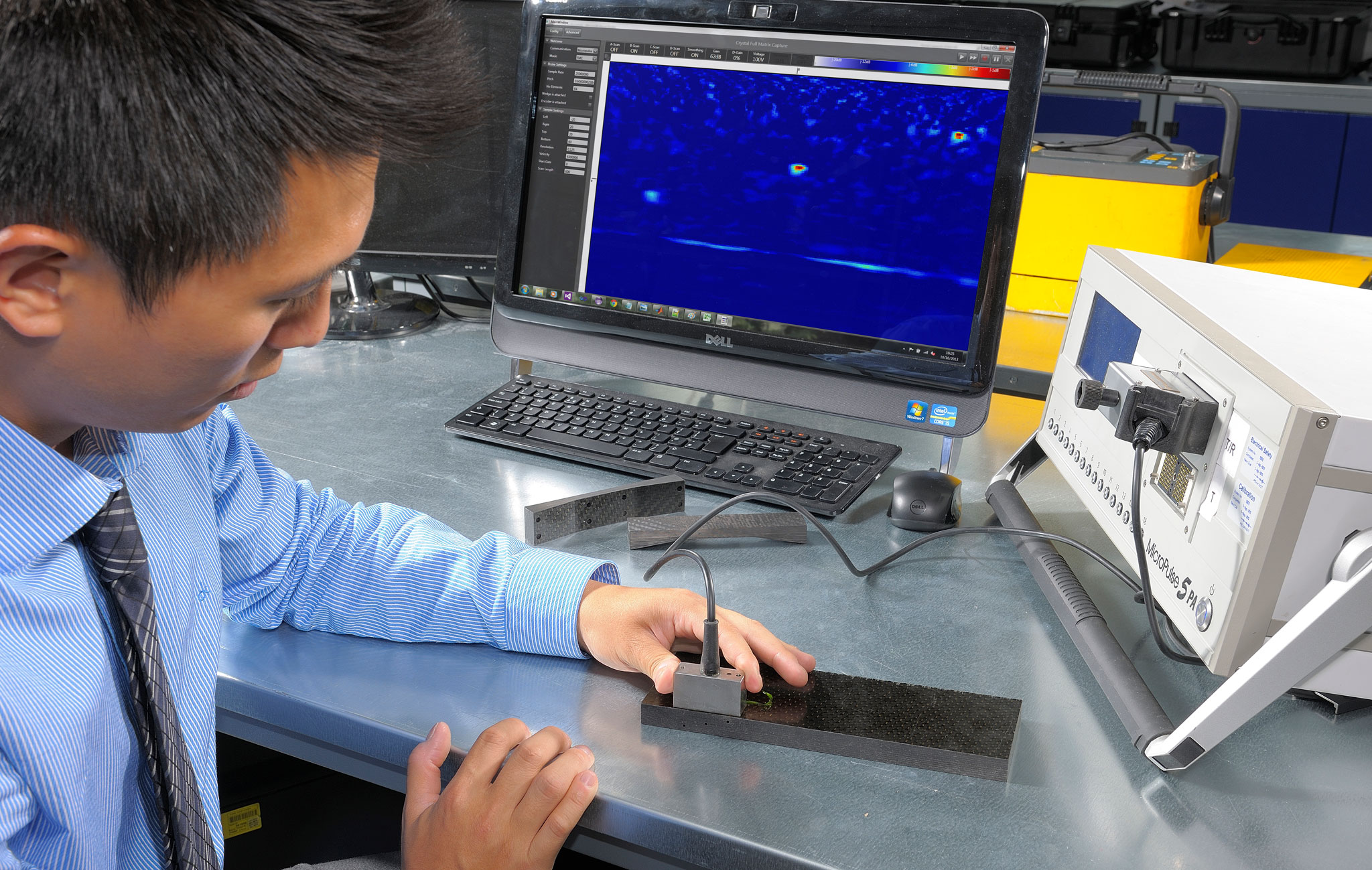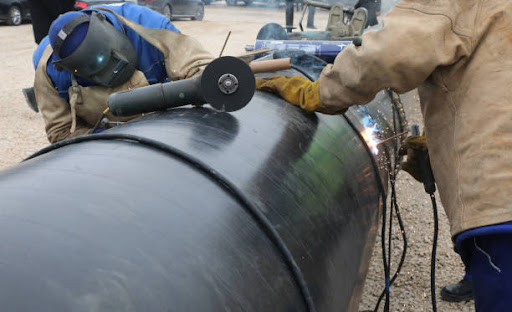Table of Contents
- Introduction
- What is Ultrasonic Testing?
- Key Components of Ultrasonic Testing
- Basic Principles of Ultrasonic Testing
- Benefits Of Ultrasonic Testing
- Conclusion
- Key Takeaways
- FAQs
Introduction
Corrosion in pipes can lead to catastrophic consequences, compromising the structural integrity of pipelines and causing environmental hazards.
There are several benefits of Ultrasonic Testing (UT) in identifying and addressing pipe corrosion, ensuring the longevity and reliability of critical infrastructure.
Pipelines are the lifelines of various industries, transporting essential fluids and gases. Ensuring the integrity of these pipelines is paramount to preventing leaks, spills, and potential disasters.
One of the most effective methods for detecting and assessing pipe corrosion is Ultrasonic Testing.
What is Ultrasonic Testing?
Ultrasonic Testing uses high-frequency sound waves to identify flaws or irregularities in materials.
This Non-destructive Testing (NDT) method has widespread applications in industries such as oil and gas, manufacturing, and construction.
NDT ultrasonic testing involves the use of high-frequency sound waves to assess the integrity of materials without causing any damage.
This method is widely employed across various industries, including manufacturing, construction, and Aerospace Industry, to detect flaws, measure material thickness, and ensure the quality of structures and components.
At its core, ultrasonic testing in NDT relies on the principle of sound wave reflection.
A Ultrasonic Transducer, a crucial component of the process, emits ultrasonic waves into a material.
These waves travel through the material until they encounter a boundary between different mediums or a defect within the material.
The transducer then picks up the reflected waves, which gives useful information about the material's condition.

Key Components of Ultrasonic Testing
Here are the key components of ultrasonic testing.
1. Transducer:
Converts electrical energy into mechanical waves, initiating the Ultrasonic Test Process.
2. Time-of-Flight Measurement:
Determines the time for Ultrasonic Waves to travel through the material and return, helping technicians assess material thickness and identify defects.
3. Velocity of Sound:
Understanding the speed of sound in the material is crucial for accurate measurements.
Ultrasonic Examination is used for flaw detection, thickness measurement, and materials assurance.
In Ultrasonic Testing Inspection, it is highly accurate and versatile, allowing for precise measurements and flaw detection on a wide range of materials and thicknesses, ensuring product reliability and safety.
Basic Principles of Ultrasonic Testing
Ultrasonic Inspection relies on the principle that sound waves travel through materials, and any disruptions in their path, such as corrosion or defects, can be detected.
This technology allows for accurate and reliable assessment without causing harm to the tested material.
Ultrasonic testing, a cornerstone in the realm of NDT Techniques plays a pivotal role in ensuring the structural integrity of materials and components.
The fundamentals of Ultrasonic Testing Terminologies are important for NDT tests and for sectors where quality control is given top priority.
Ultrasonic Testing operates on the fundamental principle of sound waves.
High-frequency sound waves, beyond the range of human hearing, are transmitted through material.
These waves encounter boundaries between different mediums or defects within the material, causing reflections that are then detected and analyzed.

Here are a few principles of UT.
1. Transducer
When placed on a material's surface, the transducer emits ultrasonic waves, initiating the Ultrasonic Testing Process.
The waves travel through the material, bouncing back upon encountering irregularities.
2. Time-of-Flight and Velocity
The key to the accuracy of Ultrasonic Testing is the measurement of time-of-flight.
By calculating the time taken for the Ultrasonic Waves to travel through the material and return, technicians can assess the thickness of the material and detect flaws.
Understanding the velocity of sound in the material is crucial for precise measurements.
3. Sound Wave Propagation
At the core of ultrasonic NDT Testing is the utilization of sound waves.
These waves are beyond the range of human hearing and travel through materials under inspection.
The way these waves propagate offers valuable insights into the material's internal structure.
Benefits of Ultrasonic Testing
Ultrasonic Testing benefits excel at identifying corrosion problems, even in their early stages.
By providing detailed insights into the extent of Corrosion, it enables proactive measures to prevent further deterioration.
Here is a list of the benefits of ultrasonic testing.
1. Greater Corrosion Problems
Ultrasonic NDT Testing plays a pivotal role in identifying and mitigating greater corrosion problems.
By employing high-frequency sound waves, it penetrates the surface, uncovering Corrosion hidden from plain sight.
This Advanced NDT Technique ensures a thorough examination, addressing corrosion concerns at their roots.
2. Less Effective Controls
Despite its efficiency, ultrasonic NDT Testing isn't immune to challenges.
Less effective controls can arise due to various factors.
Understanding the limitations and refining the testing process is crucial for achieving optimal results.

3. Corrosion Coupon Limitations
Corrosion coupons are valuable tools for assessing corrosion rates, but they come with limitations.
Ultrasonic Testing provides a complementary perspective, offering insights beyond the scope of corrosion coupons.
4. Underreporting Corrosion
Underreporting corrosion poses a significant risk to industrial assets.
Ultrasonic Testing, with its precision and depth, acts as a remedy to this issue.
UT is used to uncover strategies to address underreporting and leverage ultrasonic testing for accurate corrosion assessment.
This is the Ultrasonic Inspection Future.
5. True Meaning of MPY (Mils Per Year)
In the realm of corrosion measurement, understanding the true meaning of MPY is essential.
Ultrasonic Testing deciphers corrosion rates with unparalleled accuracy, providing a deterioration process.
6. Internal Deposits Created
Internal deposits can compromise the integrity of assets, leading to unforeseen challenges.
Ultrasonic Testing goes beyond surface inspection, revealing internal deposits, and ensuring a proactive approach to maintenance.
Conclusion
Ultrasonic Testing emerges as a crucial tool in the battle against pipe corrosion.
Its ability to detect and assess corrosion problems with precision ensures the longevity of pipelines and the safety of industries reliant on them.
Embrace the power of UT to safeguard your infrastructure and maintain operational excellence.
Ultrasonic testing has the ability to provide accurate assessments without compromising the integrity of materials, making it an indispensable method across various industries.
Key Takeaways
- Pipelines are vital components in various industries, and the threat of corrosion can lead to catastrophic consequences.
- Ultrasonic testing stands out as an effective method for identifying and addressing Pipeline Corrosion, ensuring the durability and reliability of critical infrastructure.
- UT uses high-frequency sound waves for Non-destructive Testing in industries like oil and gas, manufacturing, and construction.
- NDT ultrasonic testing assesses material integrity without causing damage and is widely used in multiple sectors.
- Ultrasonic testing involves converting electrical energy into mechanical waves and understanding sound velocity for accurate measurements.
- Ultrasonic testing uses sound wave propagation, Ultrasonic Transducer functionality, and time-of-flight measurements to assess material condition by emitting waves and analyzing reflections.
- UT excels in identifying and addressing significant corrosion problems by penetrating surfaces and revealing hidden corrosion.
- Despite efficiency, UT faces challenges, emphasizing the need for understanding limitations and refining Ultrasonic Testing Processes.
- UT complements corrosion coupons by providing insights beyond their scope, overcoming their limitations.
- UT addresses the risk of underreporting corrosion, offering precision and depth for accurate assessments.
- UT's precision in corrosion assessment without compromising material integrity makes it indispensable across industries.
FAQs
Q. What makes ultrasonic waves different from audible sound?
A: Ultrasonic waves have frequencies beyond the audible range, making them inaudible to the human ear.
This characteristic sets them apart from the sounds we can hear.
Q. Are ultrasonic waves harmful?
A: Usually, no. The frequencies used in everyday applications, like medical imaging and cleaning, are considered safe for humans.
However, prolonged exposure to extremely high-intensity ultrasound can pose risks.
3. How does ultrasonic cleaning work?
A: Ultrasonic cleaning involves the creation of high-frequency pressure waves in a liquid.
These waves produce microscopic bubbles that implode, generating shockwaves that remove dirt and contaminants from surfaces.
4. Can ultrasonic waves kill pests?
A: While ultrasonic waves can deter pests by disrupting their activities, they typically do not have the direct ability to kill them.
It's more of a humane way to keep pests at bay.
5. Why is ultrasonic testing preferred in the industry?
A: Ultrasonic testing is non-destructive and allows for the detection of internal flaws without compromising the integrity of the material.
This makes it a preferred method for quality assurance in various industries.









